Breakdown Characteristics of Unequal Sphere–Sphere Electrode Configuration Under DC Stress †
Abstract
1. Introduction
2. Methodology
2.1. Electric Field Computation
2.2. Electrode Arrangement
2.3. Experimental Setup
3. Results and Discussion
3.1. Electric Field Variation
3.2. Utilization Factor
3.3. Breakdown Voltage
3.4. Comparison of Gaps with Equal and Unequal Spheres
4. Conclusions
- Unequal sphere gaps have a non-uniform electric field distribution compared to standard sphere gaps, which results in lower utilization factors for unequal spheres;
- The maximum electric field is found to occur on larger spheres irrespective of its position as the HV or ground electrode in unequal spheres;
- As the sphere diameter increases, the utilization factor also increases for a given gap;
- The utilization factor decreases with increasing gap spacing for a given sphere dimension, and the decrement is greater for unequal spheres compared to standard spheres;
- Though the standard sphere gap has superior breakdown characteristics at higher gap spacings, unequal sphere gaps have comparable breakdown characteristics at short gap spacings.
Author Contributions
Funding
Institutional Review Board Statement
Informed Consent Statement
Data Availability Statement
Conflicts of Interest
References
- Haque, M.N.; Shanmugam, G.; Joseph, J.; Karakkad, S. Numerical Modeling of the DC Breakdown of a Sphere Gap due to a Weakly Nonuniform Electric Field. In Proceedings of the 2024 IEEE 5th International Conference on Dielectrics (ICD), Toulouse, France, 30 June–4 July 2024; pp. 1–4. [Google Scholar]
- De La Hoz, M.; Pieterse, P.J.; Etxegarai, A.; Gonzalez, D.; Mazon, Á.J.; Uhrlandt, D. Comparison of corona effect prediction criteria on sphere-plane configuration. High Volt. 2024, 9, 957–969. [Google Scholar] [CrossRef]
- Foruzan, E.; Akmal, A.A.; Niayesh, K.; Lin, J.; Sharma, D.D. Comparative study on various dielectric barriers and their effect on breakdown voltage. High Volt. 2018, 3, 51–59. [Google Scholar] [CrossRef]
- Qiu, Z.; Ruan, J.; Wang, X.; Jin, Q. Electric Field Feature Extraction and Breakdown Voltage Prediction of Sphere Gaps with Quasi-uniform Field. In Proceedings of the 2018 IEEE International Conference on High Voltage Engineering and Application (ICHVE), Athens, Greece, 10–13 September 2018; pp. 1–4. [Google Scholar]
- CIGRE Working Group 33.07. Guidelines for the Evaluation of the Dielectric Strength of External Insulation. Available online: https://www.e-cigre.org/publications/detail/72-guidelines-for-the-evaluation-of-the-dielectric-strength-of-external-insulation.html (accessed on 31 May 2025).
- Sunthrasakaran, N.; Jamail, N.A.M.; Kamarudin, Q.E.; Gunabalan, S. Analysis of Electric Field and Current Density for Different Electrode Configuration of XLPE Insulation. Int. J. Eng. Technol. 2018, 7, 127–133. [Google Scholar] [CrossRef]
- Arora, R.; Mosch, W. High Voltage and Electrical Insulation Engineering; Wiley: Hoboken, NJ, USA, 2022. [Google Scholar]
- Pokryvailo, A. Calculation of Breakdown Voltage of Gas Gaps with Weakly Nonuniform Field: Sphere and Donut Gaps. IEEE Trans. Plasma Sci. 2020, 48, 3358–3366. [Google Scholar] [CrossRef]
- Pillai, A.S.; Hackam, R. Electric Field and Potential Distributions for Unequal Spheres Using Symmetric and Asymmetric Applied Voltages. IEEE Trans. Electr. Insul. 1983, EI-18, 477–484. [Google Scholar] [CrossRef]
- Jiang, Z. Electrostatic interaction of two unequal conducting spheres in uniform electric field. J. Electrost. 2003, 58, 247–264. [Google Scholar] [CrossRef]
- Russell, A. The Maximum Value of the Electric Stress Between Two Unequal Spherical Electrodes. Proc. Phys. Soc. Lond. 1911, 24, 22–29. [Google Scholar] [CrossRef]
- IEEE Std 4-2013; IEEE Standard for High-Voltage Testing Techniques. Revision of IEEE Std 4-1995; IEEE: Piscataway, NJ, USA, 10 May 2013; pp. 1–213. [Google Scholar]
- Naidu, M.S.; Kamaraju, V. High Voltage Engineering, 6th ed.; Tata McGraw Hill: New York, NY, USA, 2020. [Google Scholar]

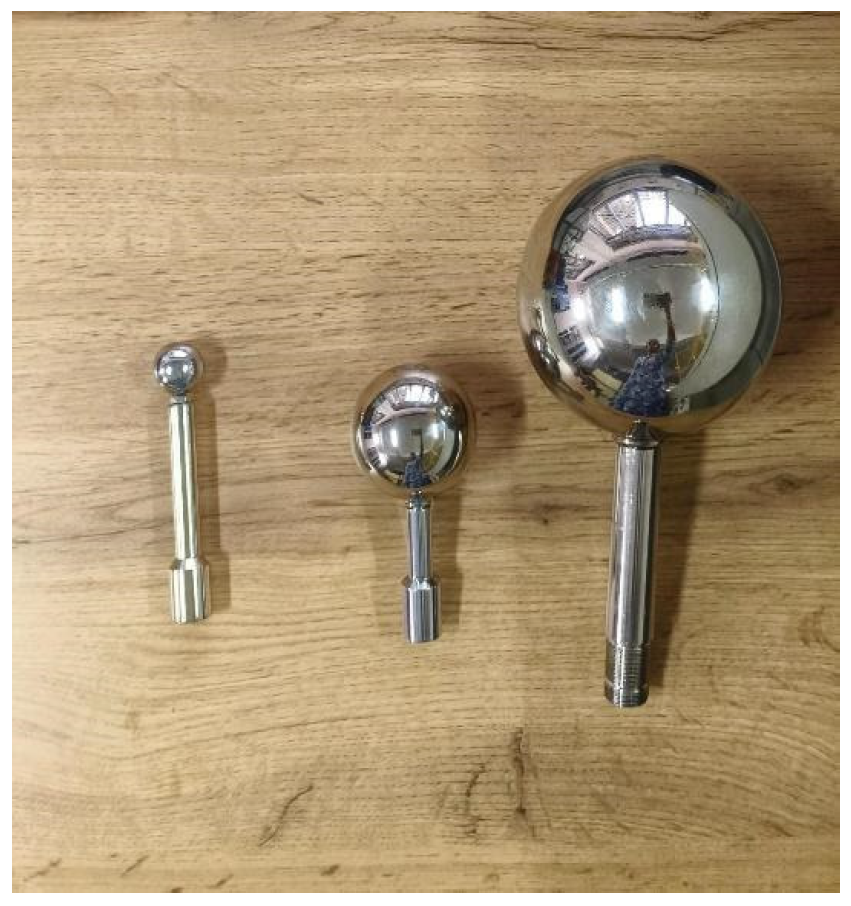
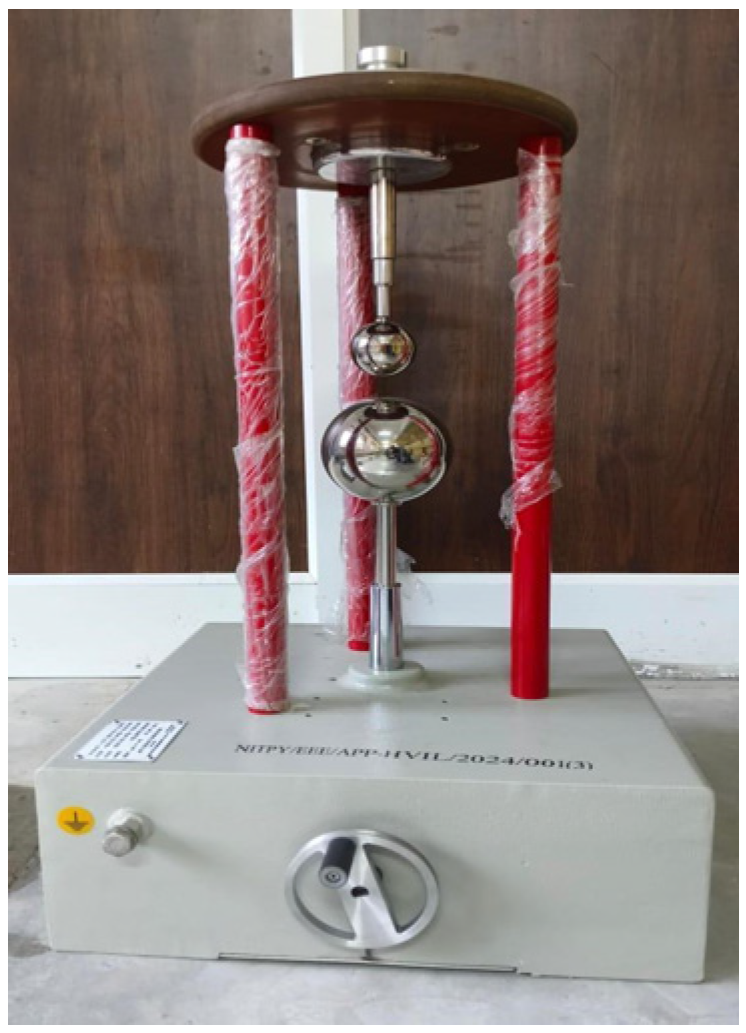
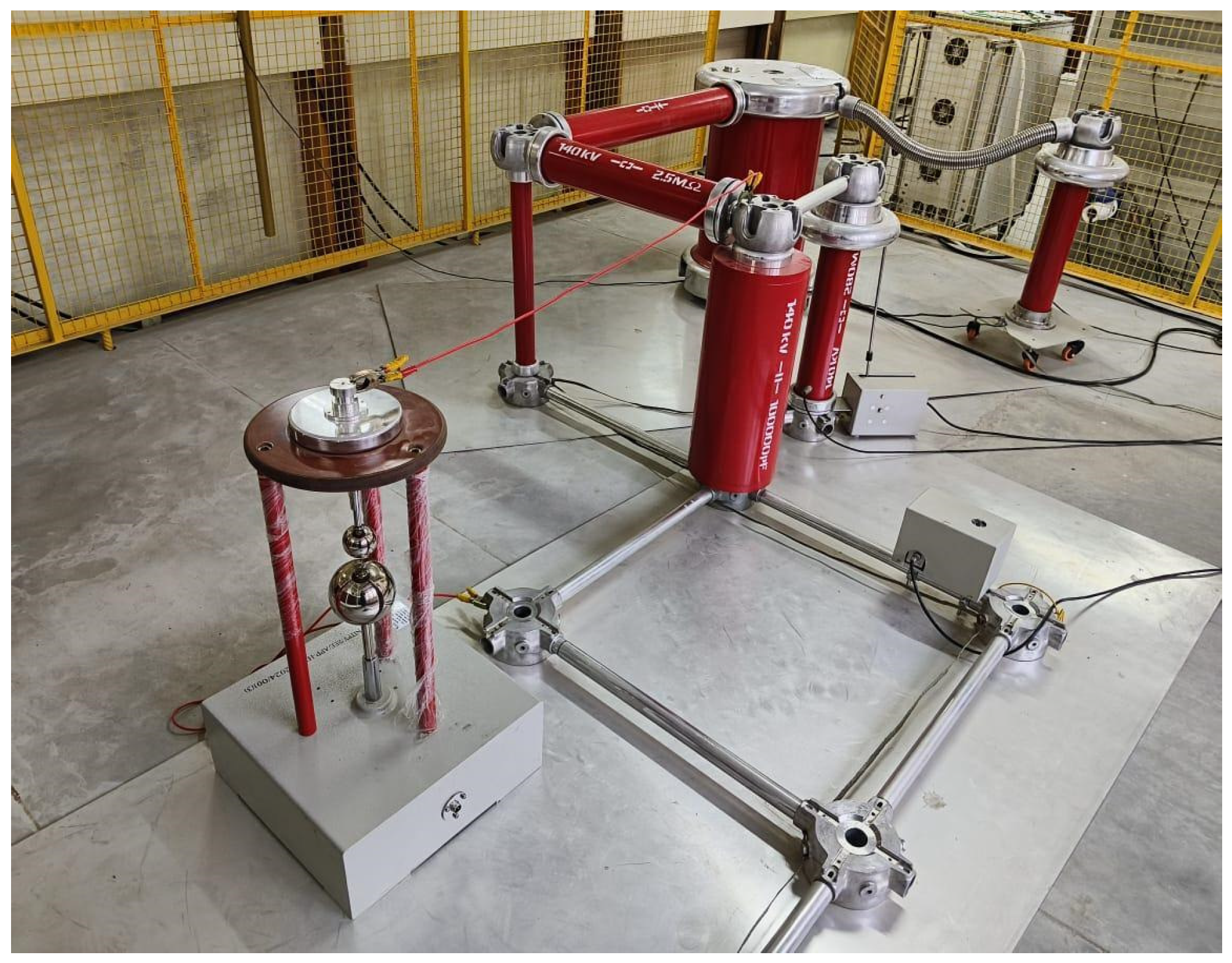
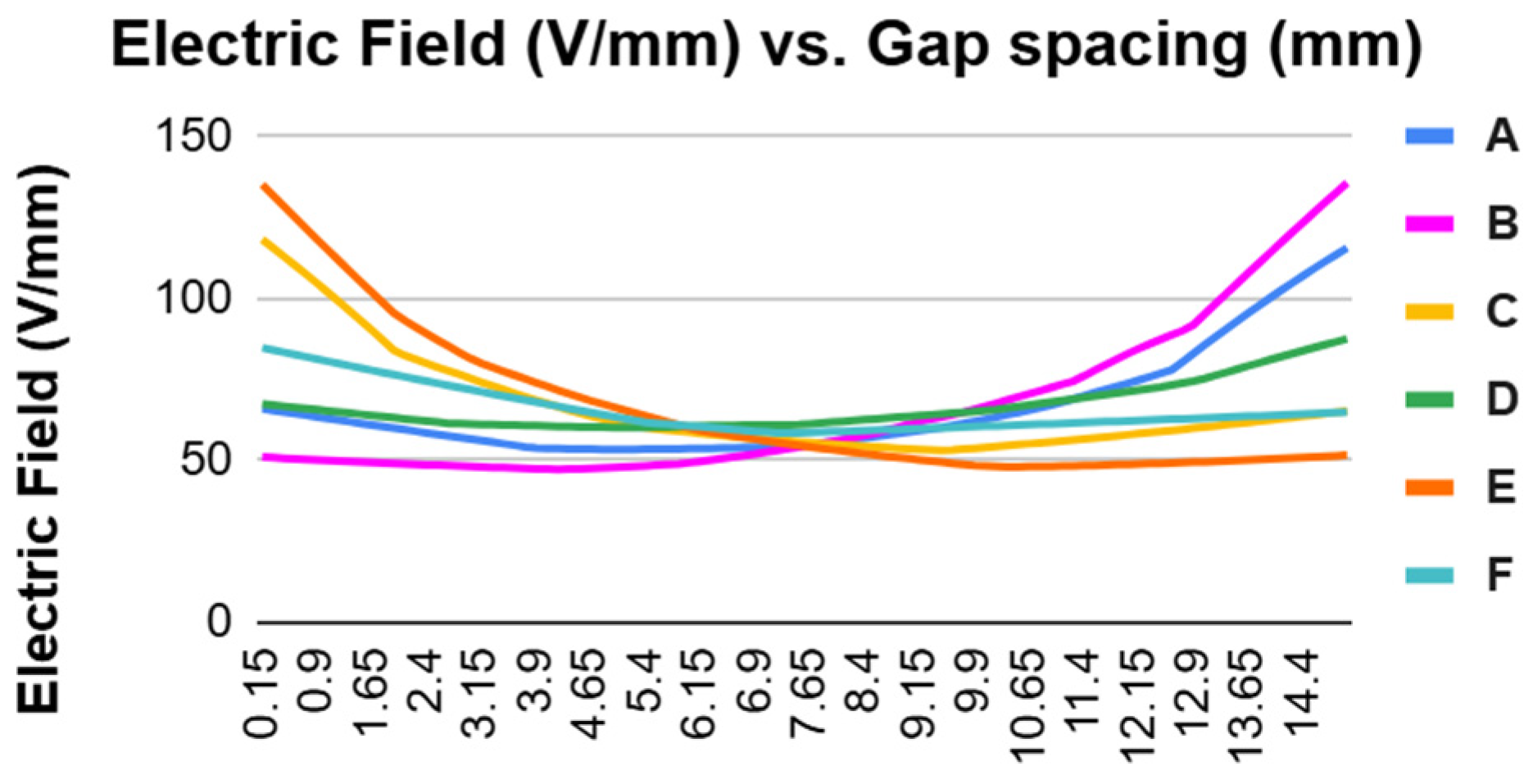

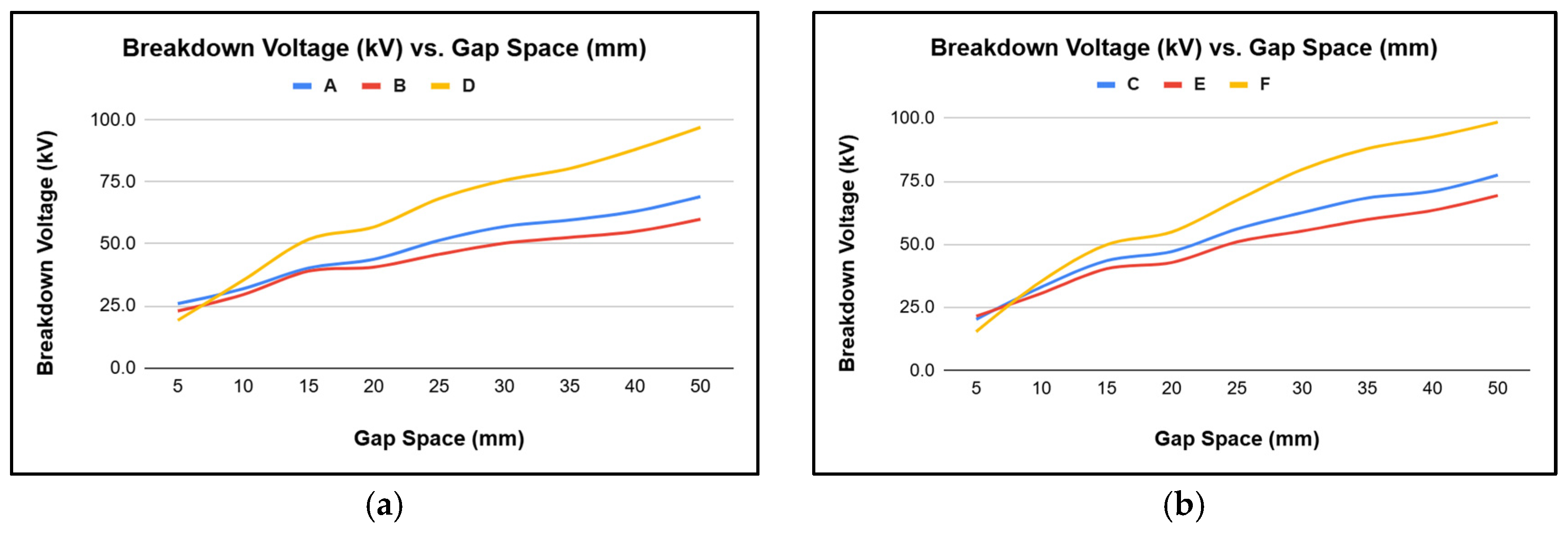
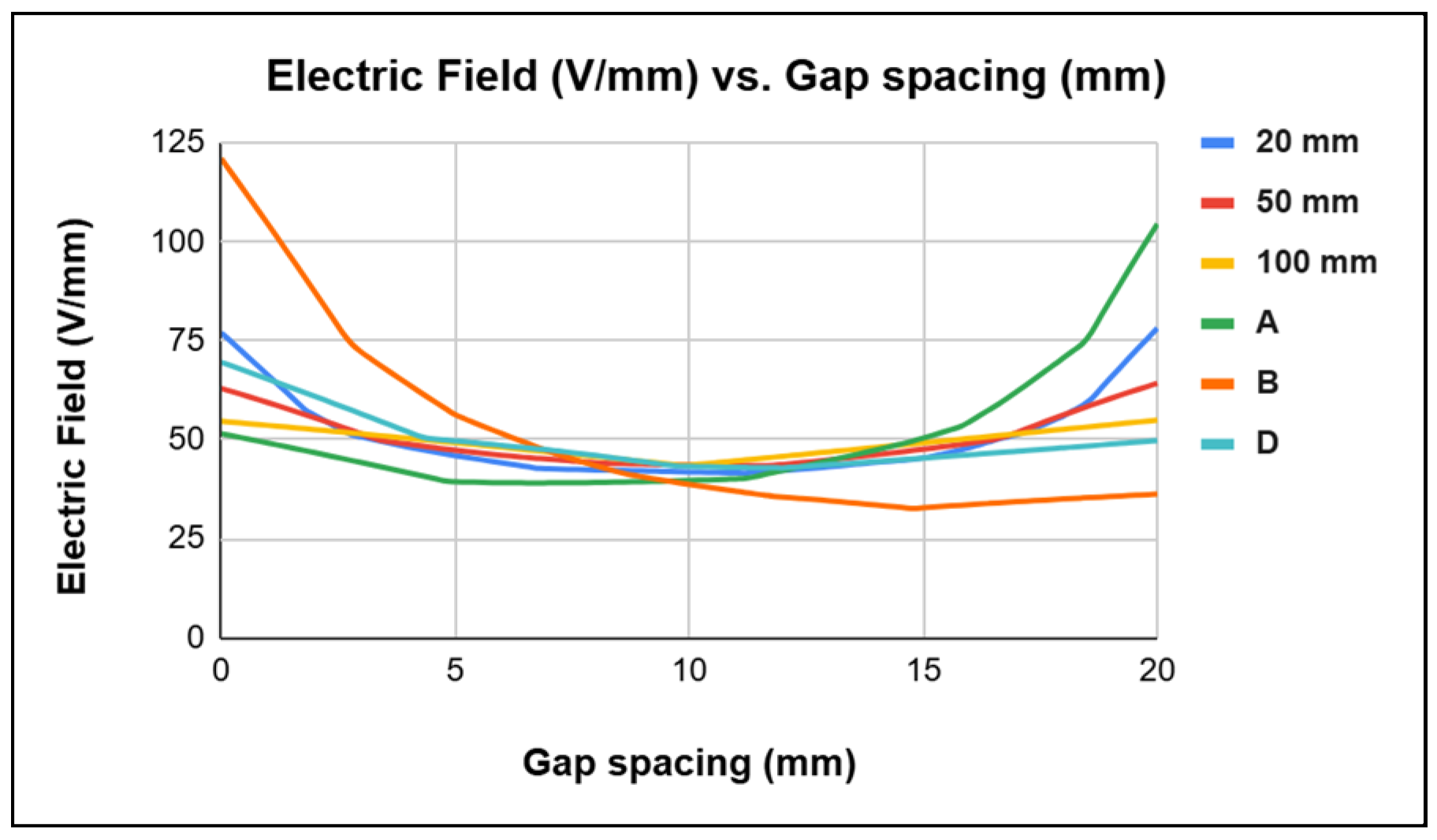

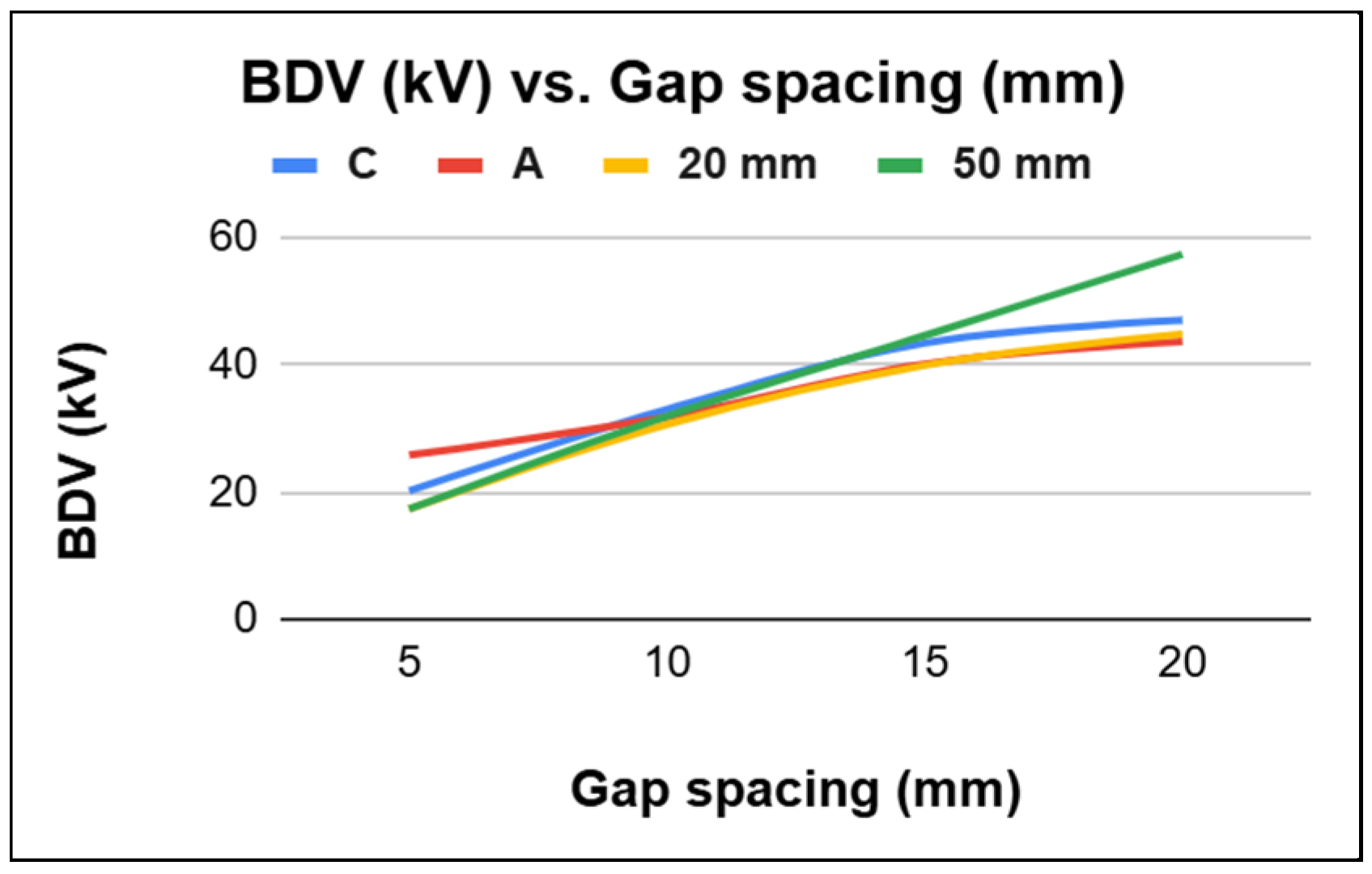
| Case | A | B | C | D | E | F |
|---|---|---|---|---|---|---|
| HV electrode diameter (mm) | 20 | 20 | 50 | 50 | 100 | 100 |
| Ground electrode diameter (mm) | 50 | 100 | 20 | 100 | 20 | 50 |
Disclaimer/Publisher’s Note: The statements, opinions and data contained in all publications are solely those of the individual author(s) and contributor(s) and not of MDPI and/or the editor(s). MDPI and/or the editor(s) disclaim responsibility for any injury to people or property resulting from any ideas, methods, instructions or products referred to in the content. |
© 2025 by the authors. Licensee MDPI, Basel, Switzerland. This article is an open access article distributed under the terms and conditions of the Creative Commons Attribution (CC BY) license (https://creativecommons.org/licenses/by/4.0/).
Share and Cite
Jayachandran, I.; Shanmugam, G. Breakdown Characteristics of Unequal Sphere–Sphere Electrode Configuration Under DC Stress. Eng. Proc. 2025, 95, 12. https://doi.org/10.3390/engproc2025095012
Jayachandran I, Shanmugam G. Breakdown Characteristics of Unequal Sphere–Sphere Electrode Configuration Under DC Stress. Engineering Proceedings. 2025; 95(1):12. https://doi.org/10.3390/engproc2025095012
Chicago/Turabian StyleJayachandran, Indhulekha, and Gowrishankar Shanmugam. 2025. "Breakdown Characteristics of Unequal Sphere–Sphere Electrode Configuration Under DC Stress" Engineering Proceedings 95, no. 1: 12. https://doi.org/10.3390/engproc2025095012
APA StyleJayachandran, I., & Shanmugam, G. (2025). Breakdown Characteristics of Unequal Sphere–Sphere Electrode Configuration Under DC Stress. Engineering Proceedings, 95(1), 12. https://doi.org/10.3390/engproc2025095012






